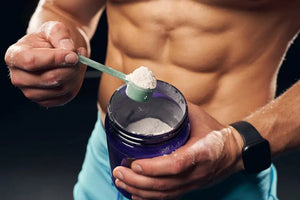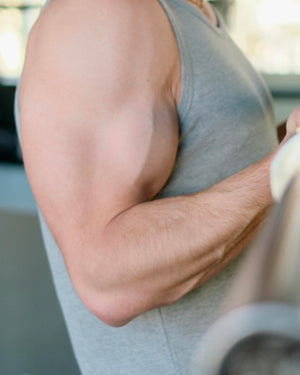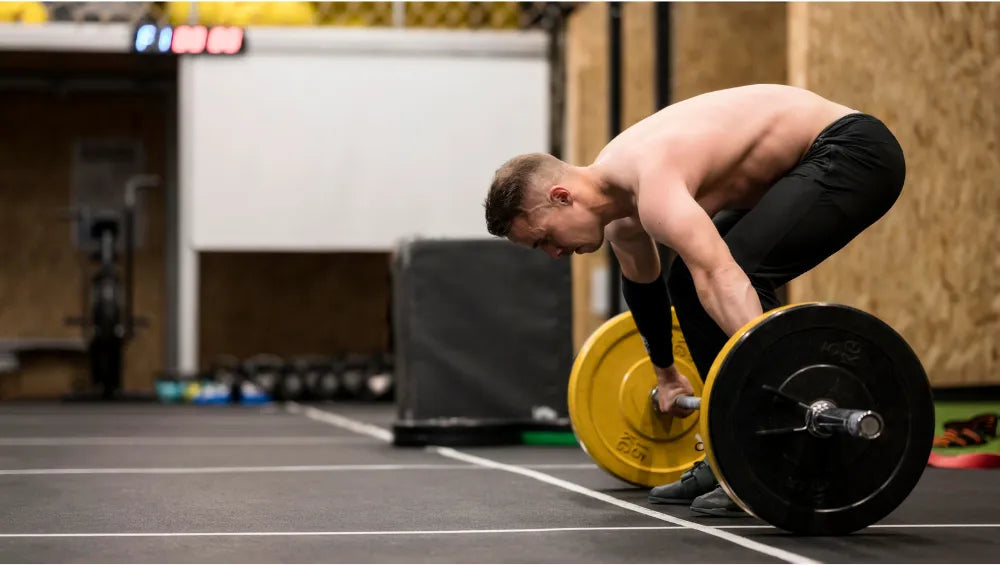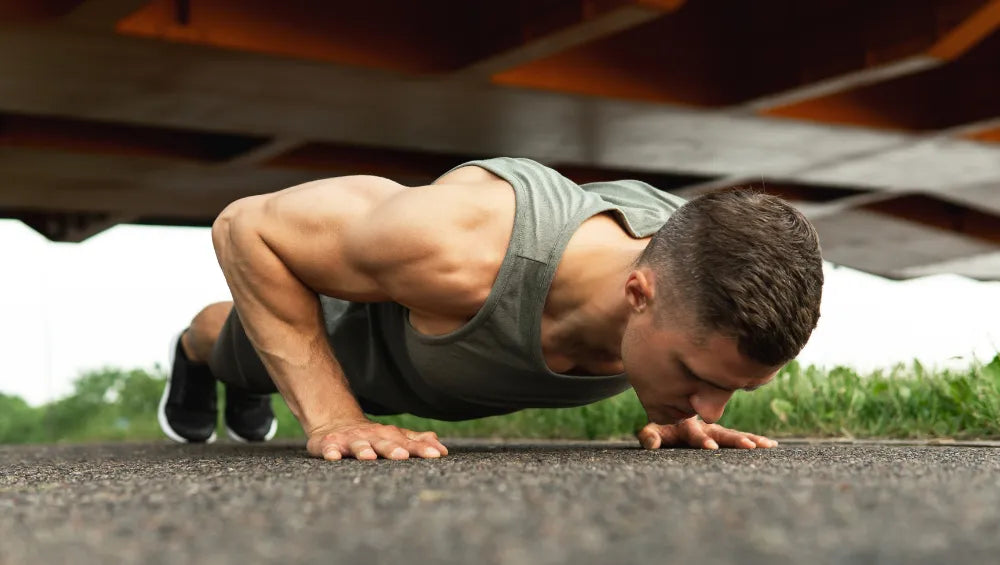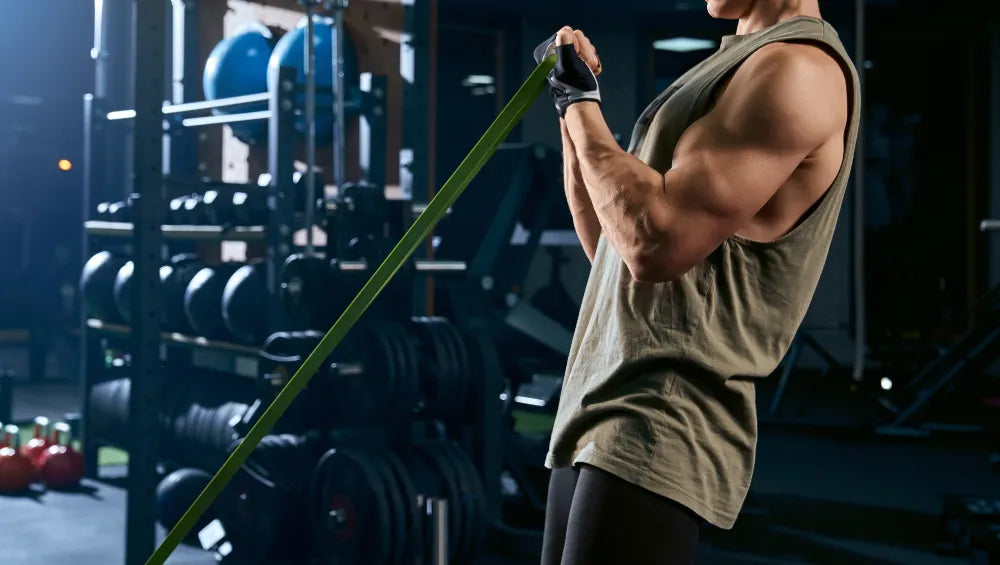The deadlift, also called the " Deadlift ," is a staple exercise in bodybuilding. It engages multiple muscle groups and offers numerous benefits for the body. Here's our advice on how to perform this technique correctly and maximize your bodybuilding results.
Why include deadlifts in your strength training program?
The deadlift is one of the so-called "polyarticular" movements, meaning it involves several joints and therefore several muscle groups. As a result, it allows for a better distribution of muscular work and helps develop strength, endurance, and power.
In other words, this exercise has the advantage of being very comprehensive and allows in particular:
- To improve posture
- To increase functional strength, useful in daily life and other sports
- To strengthen the lower back, helping to prevent back pain and problems
- To contribute to the development of muscle mass
The main muscles used during the deadlift are:
- The hamstring muscles (back of the thighs)
- The gluteal muscles
- The muscles of the back, including the quadratus lumborum and the erector spinae
Other muscles are also mobilized, such as the trapezius muscles, abdominals, and forearms. This exercise therefore helps to harmonize muscle development and contributes to improving posture and body stability.
Precautions to take before practicing deadlifts
In order to carry out this exercise safely, it is essential to take certain elements into account:
Check your physical condition
If you're a beginner, have a history of back problems, or are just starting out with weight training, consult your doctor or a personal trainer before starting deadlifts. They'll be able to give you the green light or make recommendations specific to your situation.
Choosing the right equipment
Choosing the right bar and weights is crucial for an effective deadlift. Choose an Olympic barbell and weight plates that are appropriate for your fitness level and goals. When starting out, it may be a good idea to train with a lighter beginner's bar to practice the movements without the risk of injury.
Warm up properly
A proper warm-up prepares muscles and joints by increasing their temperature and improving blood circulation. A good warm-up should include:
- 5 to 10 minutes of light cardio, such as stationary cycling or jumping rope
- Dynamic stretches specific to the muscle groups used during the deadlift (back, legs, glutes)
- A few repetitions with a light load to familiarize the body with the movement
Tips for a Successful Deadlift: The Different Steps and Positions
To fully benefit from the deadlift, it's essential to follow certain guidelines regarding positioning and execution. Here's a step-by-step guide to performing this exercise in the best possible conditions:
Step 1: Preparation and initial positioning
- Stand with your feet shoulder-width apart and parallel, toes slightly turned out, near the barbell or dumbbells. The bar should be halfway between your feet.
- Position your hands on the bar in pronation (palms facing you) at the same width as your shoulders, or slightly wider if necessary.
- Bend your knees and lean forward slightly, while maintaining a straight and stable spine by bending your knees and keeping your back straight, with your hips slightly higher than your knees.
- Keep your gaze fixed in front of you and not at the ground to maintain good cervical position.
- Grasp the bar with an overhand grip (palms facing you) or an alternating grip (one palm facing you, the other palm facing out). Your hands should be about shoulder-width apart.
Step 2: The Ascent – Lift the load safely
- Contract your back muscles and push through your heels to begin lifting the barbell or dumbbells.
- Arms should remain straight throughout the range of motion and shoulders should be kept low to avoid unnecessary tension.
- Remember to exhale during this phase of effort.
Step 3: The final position and lowering of the load
- Once the bar is at hip level, keep your back straight and continue to contract your glutes and hamstrings. This alignment is crucial to avoid injury .
- To return to the starting position, bend your knees again and lean forward, while controlling the descent of the load.
- Once the bar or dumbbells are on the floor, you can resume the deadlift to perform several repetitions according to your program.
Mistakes to Avoid When Deadlifting in Bodybuilding
To avoid poor posture and the associated risk of injury, here are some common mistakes to avoid when deadlifting:
- Rounding your back: This can put excessive strain on the spine and lead to pain or ligament damage. Always keep your back straight throughout the exercise.
- Forgetting to contract the core and lower limb muscles: This decreases the effectiveness of the exercise and increases the pressure on the joints.
- Overgripping the bar: A grip that's too tight can limit range and fluidity of motion. Just maintain a good grip to lift efficiently.
- Lifting the bar using the arms: The main muscle groups worked should be the hamstrings, glutes and back muscles.
- Pushing with your toes: This reduces your ability to generate optimal force. Instead, push with your heels to properly engage your posterior muscles.
- Pulling the bar too quickly: Sudden acceleration increases the risk of injury. Adopt a constant, controlled rhythm.
- Lifting your head towards the sky: This causes poor neck posture. Look straight ahead, without excessively bending or extending your neck.
To remedy these mistakes, do not hesitate to seek advice from a sports coach who can help you learn and master the deadlift.
Deadlift Variations for Bodybuilding Progress
Once you're comfortable with the basic technique, there are several variations of the deadlift that allow you to challenge your muscles differently and intensify your workout. Here are some options to incorporate into your strength training program:
- Sumo Deadlift: Keep your feet wider apart and your hands closer together on the bar. This position works your adductors and quadriceps.
- Romanian Deadlift: The legs are slightly bent and the torso is leaning forward. The main focus is on the hamstrings and glutes.
- Straight-legged deadlift (SLDL): A variation of the Romanian deadlift, the legs are fully extended throughout the exercise. This version further emphasizes the hamstrings.
- Trap Bar Deadlift: Equipped with side handles, the trap bar allows for a neutral grip and a more ergonomic posture to relieve pressure on the spine.
Deadlift: In Summary
The key lies in consistency, listening to your body, and, of course, the desire to learn and improve. Regular deadlifting, combined with learning proper technique under the guidance of a personal trainer, is the best way to safely progress and optimize your strength training performance.
So, don't hesitate to integrate this versatile and effective exercise into your sessions to promote harmonious muscle development and better overall performance.


